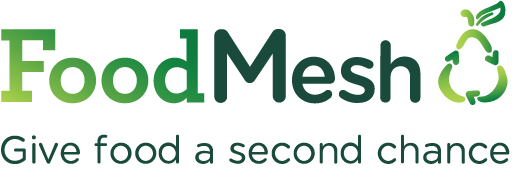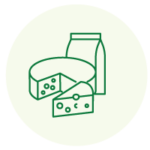The Sprout plan (partial diversion) diverts all of your edible surplus food to charitable organizations, so they can turn it into meals for the people in our communities who need them.

Sprout plan – how to guide

Training Videos
If you have any questions after watching the videos and reading the FAQs, please ask your Department Manager.
Click through to view the videos.
Program overview
General guidelines for source separation
Source separation by department
Bakery
Dairy
Deli
Meat & Seafood
Produce
Grocery
Donation packing dos and don'ts
Daily pickup process
Donation Guideline Training Posters
These are the PDF copy of the laminated cards. Feel free to download and print if you would like to have extra copies.
The QR codes at the bottom corner will take you to this training video page for your convenience.
Department Donation Guidelines 3.2
General Store Best Practice Guidelines – Sprout & Seed 3.1
Department Donation Guidelines (Simplified Chinese)
General Store Best Practice Guidelines (Simplified Chinese)
Department Donation Guidelines (Traditional Chinese)
General Store Best Practice Guidelines (Traditional Chinese)
FAQ
General
Where does the food go?
All unsold product is donated to a local charity hub who then sorts the food into what’s edible for people, what’s edible for animal consumption and the rest is composted. This program is recovering over 90% of what was previously wasted food and diverting it to feed people and animals.
Why is source separation important?
Keeping food products separated by department allows the weights to be more easily measured to determine the amount of waste being generated. Please place unsold product in stackable boxes such as banana boxes.
What do I do with inedible food?
Only food that is UNSAFE for human AND animal consumption should be disposed of in the same way that you usually do.
How and when should I mark totes with the red stickers?
Only food that is UNSAFE for human AND animal consumption should be marked with a red sticker on the tote. This communicates to the food bank that the products are UNSAFE and should be disposed. Please always place the stickers on the TOP of the tote in a highly visible location.
When should I line totes with bags?
Please line totes with plastic bags if the products are very wet or messy. For example, veggie trim from the Produce department, leaking milk jugs from the Dairy department, or leaking blood from the Meat/Seafood department.
What kind of plastic bag should I line the tote with?
Please use clear plastic bags. We recommend the following item: Ralston® Regular Garbage Bags, Translucent, 35X50 – 29650. You may also use any kind of clear bags you have on hand that fits the totes. Clear garbage bags or bulk bin liners also work well.
Can customer-returns be donated?
Because we cannot be certain what happens to food once it has left the store, customer returns are considered to be inedible and should be disposed of as usual.
Bakery
Can bakery items that have fallen on the floor or been exposed to other unsanitary conditions be donated?
No, please continue to dispose of these items as usual.
How should I store bakery items that can spoil?
Please store cakes and pastries containing dairy, or other spoilable substances, in a temperature controlled location until the charity pickup time.
When should bakery items be disposed of?
Any items that are spoiled, contaminated, have been out of temperature control (and it’s required it to maintain food safety), or have been returned by a customer are considered to be UNSAFE to eat and should be disposed of as usual.
Dairy
Can dairy products that are past Best Before be donated?
Yes! The charity will check the Best Before dates when sorting the products and determine whether they can be safely distributed.
Can milk in glass bottles be donated?
Normally the glass milk bottles should be returned to the producer for deposit refunds. Check with your department manager about whether these should be donated or not.
When should dairy totes be disposed of?
Any items that are spoiled, contaminated, have been out of temperature control, or have been returned by a customer are considered to be UNSAFE to eat and should be disposed of as usual.
Produce / Floral
Do I need to repackage produce if we receive unsaleable product?
No, you can send the unsaleable produce to the food bank in the boxes it’s already packed in, provided they are stackable on a pallet. For example, boxes of bananas, or flats of strawberry clamshells.
How should salad dressings in glass jars be packaged?
Please place products in glass jars separately from unpackaged produce. If the glass breaks, it could injure the volunteer sorting the product. It can also contaminate the entire tote, meaning all the produce will need to be disposed.
Can trimmings from the floral department be donated?
Yes, floral trim should go in a plastic-bag lined tote and will be sent to farm or composted as appropriate.
Can live herbs and potted plants with soil be donated?
Yes, but please package the plants in cardboard boxes or plastic-lined totes to avoid cross-contamination from the soil. The food bank will distribute to their clients.
Meat / Seafood
What factors determine if meat or seafood products are edible or inedible?
If the answer to the following questions is YES then the item is UNSAFE to eat and should go into a tote marked with a red sticker:
- Is the meat or seafood past the Best Before date?
- Does the item look or smell spoiled?
- Is the packaging compromised (e.g., holes in packaging)?
- Was the item out of temperature control?
- Is this a customer-returned item?
How should raw meat and seafood items be packaged in totes?
Always place raw meat and seafood items in plastic-lined boxes. Keep raw meat and seafood separated from prepared and vacuum-packed meats to avoid cross contamination. Don’t mix raw seafood with raw poultry, beef or pork to avoid cross contamination.
Deli
Can bulk salads be donated?
Yes, they can be donated to charity as long as they are packaged, labelled with the product name and the Best Before date, placed in totes, and kept under temperature control until pickup.
Can deli meat end cuts be donated?
Yes, they can be donated to charity as long as they are packaged, labelled with the product name and the Best Before date, placed in totes, and kept under temperature control until pickup.
Can soups be donated?
Yes, they can be donated to charity if frozen. Please freeze in sealable bags (Ziploc or similar) and label with the soup type and the Best Before date. Place frozen soup bags in boxes and keep frozen until pickup.
Can hot buffet dishes such as chickens wings, fried chicken and potato wedges be donated?
Yes, they can be donated to charity as long as they are packaged, labelled with the product name and the Best Before date, cooled to below 4C in accordance with Food Safe guidelines, placed in boxes, and kept under temperature control until pickup.
When should deli items be disposed of?
Any items that are spoiled, contaminated, have been out of temperature control, or have been returned by a customer are considered to be UNSAFE to eat and should be disposed of as usual.
Bulk
How should bulk items be packaged for donation?
Charities need to know the contents of bags of bulk items in order to distribute them to their recipients due to allergen risks.
The bulk items have been infested with insects. Should I send these items to the charity?
Do not send any food that has been infested with insects. Talk to you department manager or store manager about how to handle disposal of infested product.
When should bulk items be disposed of?
Any items that are spoiled, contaminated, or have been returned by a customer are considered to be UNSAFE to eat and should be disposed of as usual.
Grocery / Frozen
Can non-food household items be donated?
Yes, household items such as toilet paper, cleaning supplies and seasonal decorations can be donated. Use a plastic-lined tote if the non-food items might spill and contaminate it so it’s no longer food safe (e.g. laundry detergent or bleach).
When should grocery/frozen foods be disposed of?
Grocery and frozen items are inedible if the packaging is ripped or damaged in a way that the food may have been contaminated. Frozen items that haven’t maintained temperature control are always inedible. Customer returns are always considered to be UNSAFE and should be disposed of as usual.








